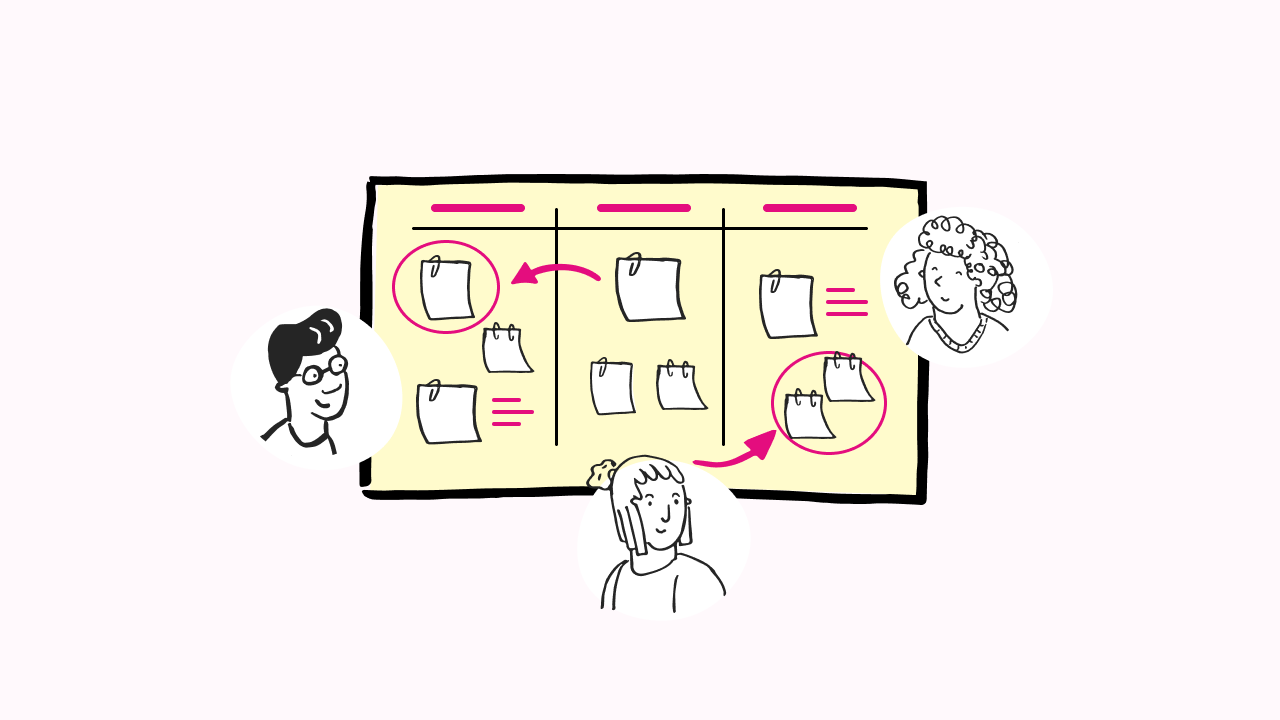
‘Content design’ has become an increasingly catch all term for all kinds of digital writing. I’m in two minds about this, because on one hand simply swapping ‘web editor’ roles to content designer ones can lead to confusion and gaps in skillsets. But content design has come a long way from its GDS roots back in 2014 when it was first coined by Sarah Richards.
Personally, I like to switch out content designer for UX writer when I’m working for a private sector client (this is something I speak about at more length in a recent webinar I did with Simon Norris, Nomensa’s CEO). But regardless of what we call it, content design’s core tenants – writing with empathy, championing inclusion and building services based on user research – extends much further than its original GDS definition.
Rather than debating the intricacies of what makes a content designer different to say, a conversation designer or traditional copywriter, I wanted to dedicate this blog to understanding why it’s an essential skillset that you shouldn’t overlook or underestimate.
Whether we’re working on a web build, designing an app or helping to create a new service, content designers bring an invaluable perspective when creating excellent, user-centred experiences. Here are six reasons why you just can’t do without us.
Content design involves more than just words
Content designers think strategically about the words they produce. We understand that content is more than just the copy that appears on customer-facing services, so we want to be bought in early so we can help inform the entire experience – not just the parts that have words in.
We don’t just dwell on the copy that sits within a page, but the layout, taxonomies, structure and wider eco-system that underpin an experience. This includes information architecture as well. Content designers can audit your website, untangle tricky user journeys and remove duplication across pages. And we can do all this before we even begin looking at the granularities of web content.
Consider a prototype. You’ll have likely seen designs filled with ipsum lorem or wireframes that are handed to content designers to fill in the blanks. This often results in design changes because messaging simply cannot fit in certain areas, or the journey itself feels disjointed because content has been approached in silo rather than as a conversation that occurs across multiple touchpoints and pages.
By including us at the beginning, we can figure out what messaging needs to go where and what design elements will need to be included. We can also draft in real copy earlier, helping to gain more meaningful insights when it comes to usability testing. The result is infinitely better experiences that happen much sooner, not to mention more human-sounding content and natural user flows.

Content design is multidisciplinary by nature
Forget the age-old image of a writer hunched over a typewriter hidden away in the corner. Content designers know they create their best work when they’re part of a team. That’s why we always collaborate with other disciplines, like designers, user researchers, accessibility consultants and developers. And given that a core part of our job is information gathering, we listen well and learn from these practitioners, too.
We’re also very used to working with operational, call centre and marketing teams, as well as policy specialists. We pay attention to not only the organisational or technical limitations an organisation has, but also the language these stakeholders use. This helps us to build a full picture of a problem and then translate it into user friendly copy.
By working across an organisation, content designers are rewarded with a perspective that stretches all the way from the user to the people creating a product. We need to understand how things work so we can write about them, so don’t be surprised if our questions reach beyond the usual remit of just the words on a page.
It’s a collaborative kind of writing
Leading on from our last point, content designers also have a whole arsenal of tactics they can deploy to help bring ideas to life on the screen. Take paired or co-writing for example. Paired writing or co-writing is an excellent way of weaving together what users need and organisations want.
By getting a few stakeholders and a UX writer in a room, you can bake policy, legal or business requirements into the copy as you write it, rather than having it fed in retrospectively once it’s been written and shared for sign off.
There’s also a very happy outcome of paired, co-writing or working in the power of two – we get to explain why changes are being made and why some can’t. We learn about technical limitations and the specific needs of a role, team and organisation. This helps us to become more t-shaped.
Rather than just chucking changes over a fence or trying to explain it all in an annotated Word doc full of tracked changes, we can take the time to walk stakeholders through the intricacies of best practice. This not only gets their buy-in more easily, but it also means that they understand what the users need and can bring those lessons into their writing moving forward.
In short: we work openly and transparently. Most people can’t master Figma or Axure in an afternoon, but we can all learn how to make our writing a little more readable. And content designers – being the language nerds they are – love to talk, teach and upskill those around them, so we’re always happy to help.

It’s based in research and real user insight
Unlike other kinds of digital writing that might draw on some analytics or industry trends, content design is always built on real user behaviour. And it’s not just any old user, general UX or writing best practice – it’s based on your users’ behaviour. This means you can trust that the words they craft will be right for your audience.
But research isn’t just something we do at the start of a project and never to do again. Content designers work closely with user researchers to iteratively test and improve services, whether that be an extensive round of user testing to see how a new service is faring, A/B testing new content or working with analysts to understand on-page behaviour.
It’s not only the design, flow or logic of a page that needs to be robustly tested. Content designers can also lead user research sessions, create personas, craft test plans and write user stories, as well as identify areas within a product or service that needs exploring from a content perspective.
Content design brings everyone along
Content designers write for everyone. While this is especially true when working for government projects, we bring plain language principles into every word we write. But writing for inclusion doesn’t mean dumbing down – it’s really about opening up content so it can be accessed by everyone.
Good content gives people the information they need quickly, clearly and in a format they expect. It’s empathetic and meets users where they are, rather than making them wade through heavily branded copy or complex text. But this doesn’t mean that we strip language of tone and personality.
Quite the opposite – even services like the NHS or GOV.UK may seem neutral in tone in comparison to other websites, they’re still conveying characteristics in the way content appears. They speak with confidence and authority to build trust but do so in a way that makes users feel understood and not spoken down to. It’s simple, but it’s still powerful.
GOV.UK and the NHS have a duty to ensure that people with disabilities, low digital confidence or language barriers can access their content, but so do you. In the UK alone, 22% of the UK population have some kind of disability. That’s roughly 13.9 million people you are potentially blocking from accessing, using and buying your products and services. It’s not just the right thing to do, it’s something you can’t afford not to.
Content touches every part of your business
From microcopy populating error messages and buttons to policy documents and internal processes, test scripts and project briefs, working with content designers can bring clarity, efficiency and purpose to all your operations. We’re also an essential part of design teams and systems, as each of those components and images will need accompanying words, too.
Designs entice and engage, but it’s content and language that helps users feel understood. And it’s what helps them complete the task they came here to do. Content design also occasionally slips into service design – by paying attention to the various touchpoints a user has when moving through a product, site or service, we can build in messaging that helps them along.
Customer experiences are an accumulation of micro interactions and interlinking content. Customers don’t see organisations as a single page or product – they see the whole, so we need to focus on the whole. We’re here to create stories that transcend the entire digital experience. And we can only do that when we’re given access to more than just product pages or already signed off screens.
If you’re still in two minds about whether you need to bring content designers in to help you tackle your next digital project, get in touch with our team.
They’ll talk you through our content design offering and even show you examples of the impact we’ve already had with clients such as M&S, Test and Trace, Virgin Media Ireland and the Department of International Trade.
We drive commercial value for our clients by creating experiences that engage and delight the people they touch.
Email us:
hello@nomensa.com
Call us:
+44 (0) 117 929 7333




